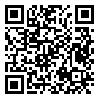Volume 22, Issue 4 (2018)
CLR 2018, 22(4): 95-118 |
Back to browse issues page
Download citation:
BibTeX | RIS | EndNote | Medlars | ProCite | Reference Manager | RefWorks
Send citation to:



BibTeX | RIS | EndNote | Medlars | ProCite | Reference Manager | RefWorks
Send citation to:
Soltani S N, Mansouri Boroujeni M. Requirements on the application of the Collective Litigation procedure in the Iranian Legal System of Iran. CLR 2018; 22 (4) :95-118
URL: http://clr.modares.ac.ir/article-20-13674-en.html
URL: http://clr.modares.ac.ir/article-20-13674-en.html
1- Assistant Professor, Department of Public law, College of Farabi of University of Tehran, Tehran, Iran , naser.soltani@ut.ac.ir
2- Assistant Professor, Department of Public law, College of Farabi of University of Tehran, Tehran, Iran
2- Assistant Professor, Department of Public law, College of Farabi of University of Tehran, Tehran, Iran
Abstract: (9969 Views)
Collective litigation is a proper tool which can empower vulnerable people by collecting the power of numerous and affected but disempowered people against a powerful party. Before importing the procedure in our legal we need to respond some theoretical problems. First is the dependence to group and disappearing personal autonomy in a collective litigation, however the procedure can ensure the litigant interests in the best way. Second is the promotion of unfair compromises -or in other words- legalized blackmail. It's really a defect in the procedure, but Shiite's Fiqh validates a conciliation that based on an untrue claim. Finally, the third is the intervention of an unauthorized representative. We may solve this problem by the concept of adequacy of representation on the context of a functional red of unauthorized representative. Explanation of these main problems shows us that using of the procedure still is better than ignoring. The peper concludes that utilizing this procedure need to promote the groups' position in our legal system.
Keywords: Collective Litigation, Group, Adequacy of Representation, Reconciliation on a False Claim, Voluntary Organizing
Article Type: Original Research |
Subject:
Comparative Law
Received: 2017/07/1 | Accepted: 2021/03/8 | Published: 2019/03/15
Received: 2017/07/1 | Accepted: 2021/03/8 | Published: 2019/03/15
Send email to the article author
| Rights and permissions | |
 |
This work is licensed under a Creative Commons Attribution-NonCommercial 4.0 International License. |







